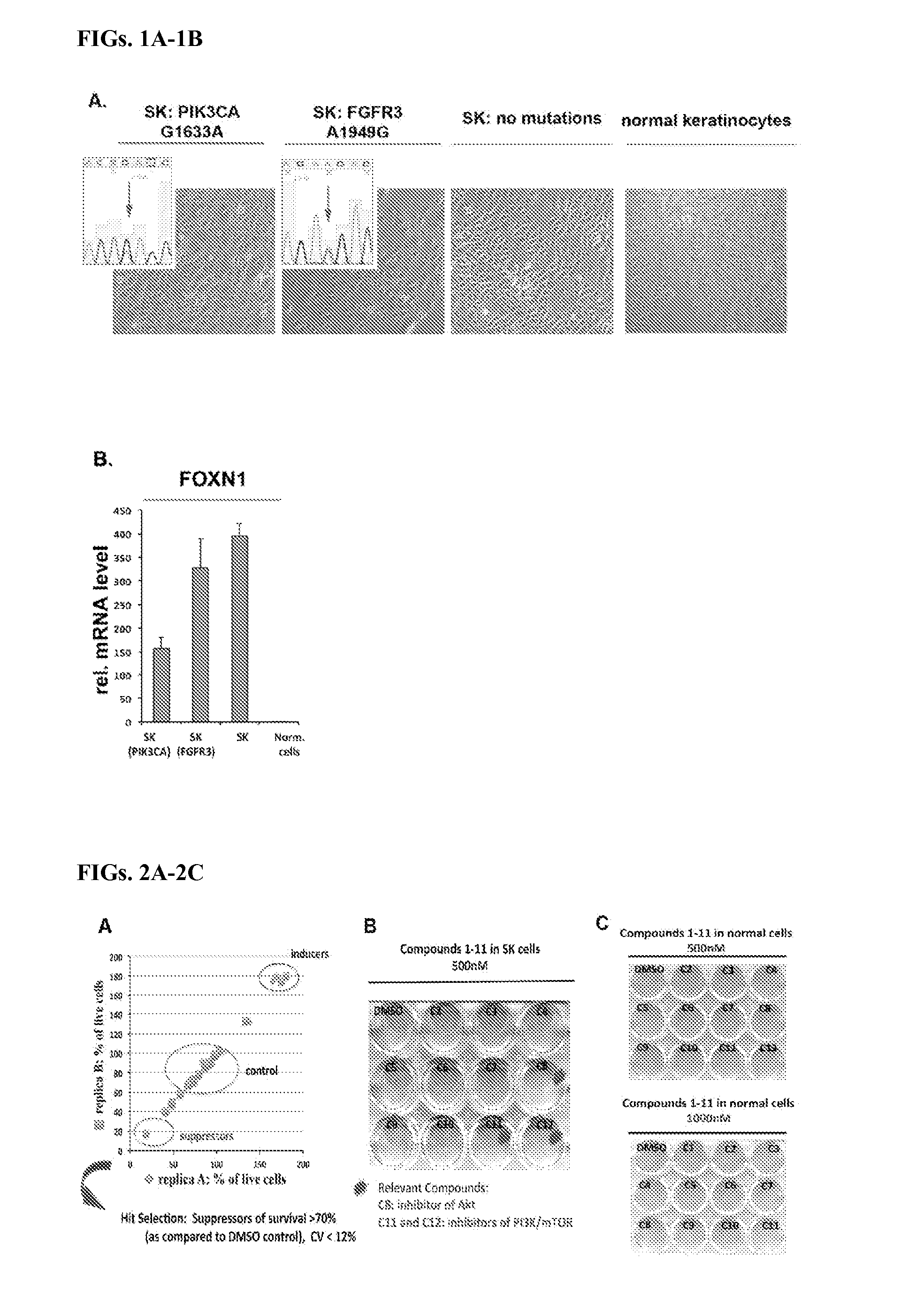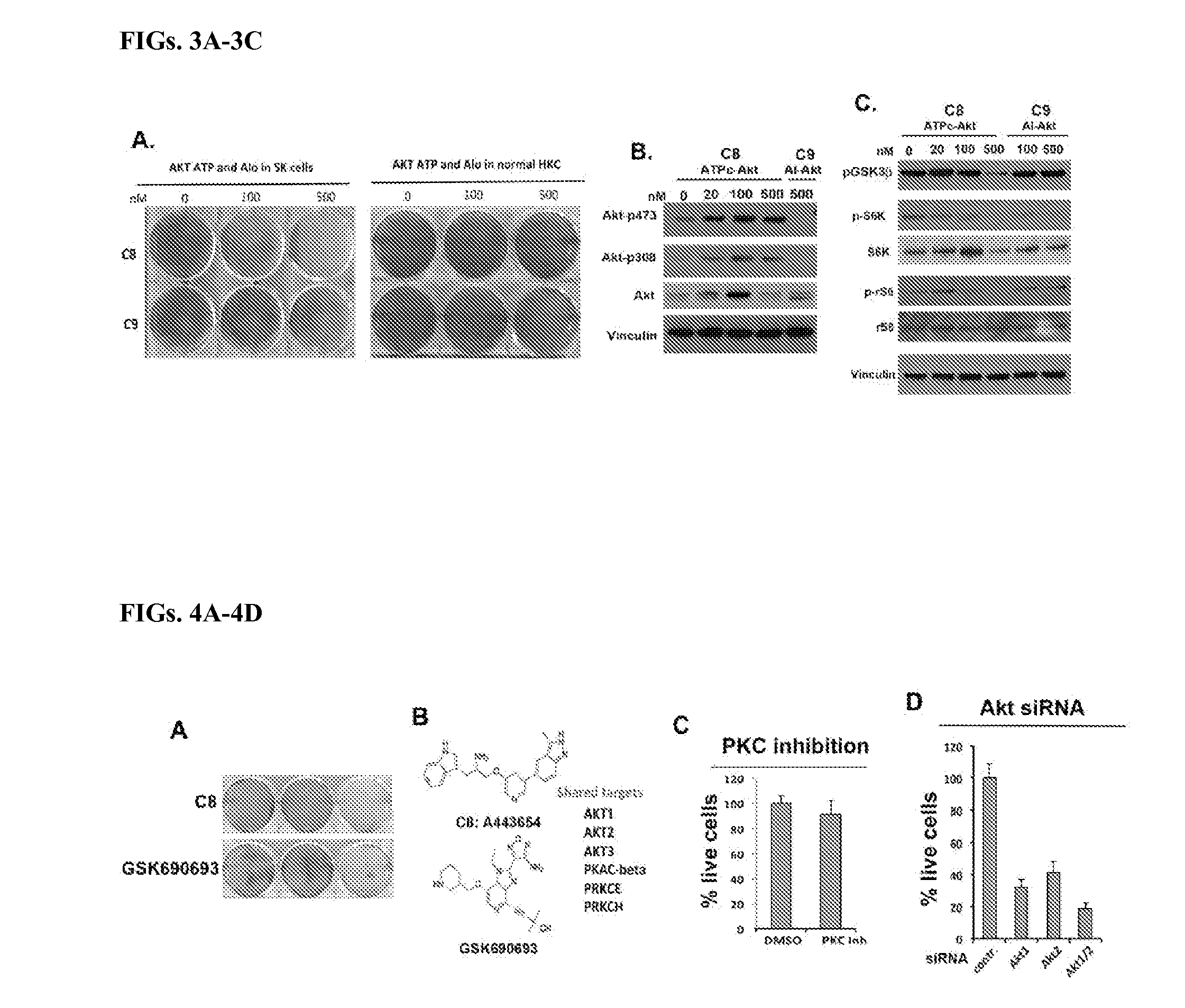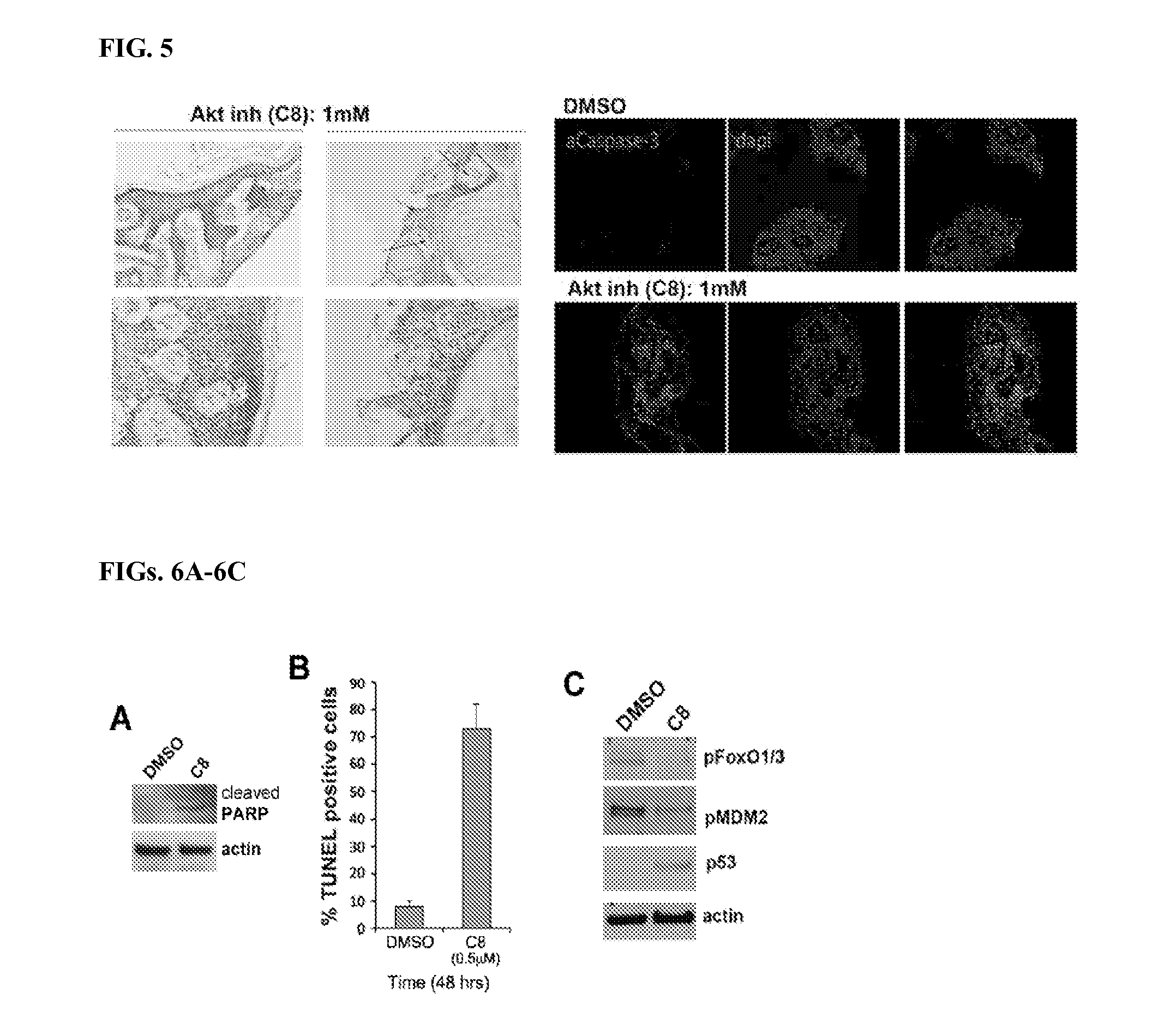Agents and methods for treating and preventing seborrheic keratosis
a technology of seborrheic keratosis and agents, which is applied in the field of agents and methods for treating and preventing seborrheic keratosis, can solve the problems that the method of culturing primary seborrheic keratosis cells is not available in the ar
- Summary
- Abstract
- Description
- Claims
- Application Information
AI Technical Summary
Benefits of technology
Problems solved by technology
Method used
Image
Examples
example 1
Primary Cultures from Patient Samples are a Novel Approach to Study SKs
[0114]The data presented herein as well as evidence from recently published reports5,7 point to a unique combination of oncogenic genomic aberrations in SK lesions. However the molecular consequences of these changes could be studied only to a limited extent at a histological level in harvested tissue or through correlation with similar changes in normal cultured human keratinocytes. Therefore, the inventors sought to extend the ability to address questions and hypothesize about determinates of benign epidermal tumor development in a well-defined in vitro cell culture system. This turned out to be a challenging task requiring months and months of frustrating attempts to reach the appropriate combination of enzymatic digestion and physical tissue dissociation. Notably SKs can be removed by a surgical technique, which does not harvest full thickness tissue but aims at preservation of the dermis, thus making the reg...
example 2
Primary SK Cells are Dependent on Activated Akt Signaling for Survival
[0116]Considerable evidence suggests that a hallmark of SK lesions is enhanced survival and lower apoptosis rates25. The inventors sought to identify the major pathways responsible for this feature. Previously characterized genomic alterations in SKs point to the fact that pathological activation of receptor tyrosine kinase signaling pathways can drive survival of these types of tumors. Therefore, it was hypothesized that inhibition of kinase signaling would induce cell death in SK cells.
[0117]Due to the fragility of the primary cultures, RNAi transfection in a high throughput fashion turned out to be challenging, which prompted the use of a collection of specific small molecule kinase inhibitors to determine which kinase is essential for survival of SK cells but not of normal human keratinocytes. This level of selectivity was introduced in order to specifically target dependency caused by genomic alterations (bot...
example 3
Inhibition of Akt Signaling Causes Cell Death in SK Cells Through a FoxO3 / p53 Mediated Mechanism
[0123]It is well-established that activation of Akt in cells is known to elicit pro-survival effects through activation / suppression of different targeted pathways. One of the common mechanisms for cell death upon Akt inhibition is induction of apoptosis, which was also observed upon treatment of SK cells with C8 as detected by cleaved PARP levels and positive TUNEL staining (FIG. 8A, 8B).
[0124]Therefore it was investigated if any of the prominent pro-apoptotic targets of Akt were involved in this process. A decrease of phosphorylated levels of FoxO1 / 3 as well as of phosphorylated MDM2 was observed, which correlated with increased p53 levels upon treatment with the Akt inhibitor (FIG. 8C). Importantly when FoxO3 expression (a direct Akt target30) and / or p53 (an indirect Akt target,31,32) was depleted through siRNA in primary SK cells, the inventors were able to rescue the killing effect of...
PUM
| Property | Measurement | Unit |
|---|---|---|
| temperature | aaaaa | aaaaa |
| time | aaaaa | aaaaa |
| size | aaaaa | aaaaa |
Abstract
Description
Claims
Application Information
 Login to View More
Login to View More - R&D
- Intellectual Property
- Life Sciences
- Materials
- Tech Scout
- Unparalleled Data Quality
- Higher Quality Content
- 60% Fewer Hallucinations
Browse by: Latest US Patents, China's latest patents, Technical Efficacy Thesaurus, Application Domain, Technology Topic, Popular Technical Reports.
© 2025 PatSnap. All rights reserved.Legal|Privacy policy|Modern Slavery Act Transparency Statement|Sitemap|About US| Contact US: help@patsnap.com



